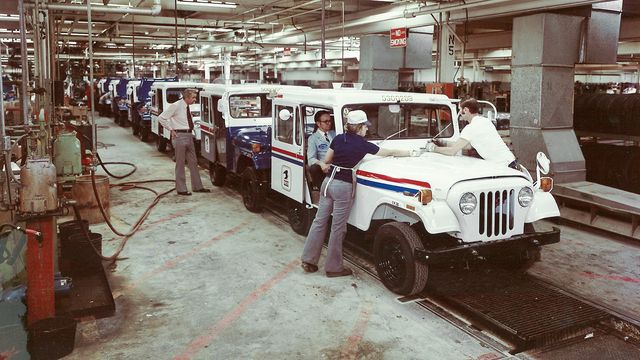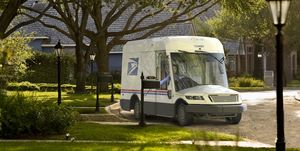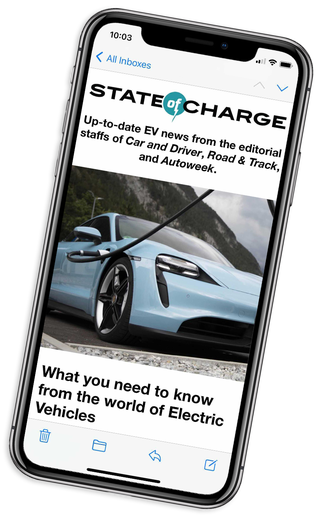The United States Postal Service made news last week by unveiling a rendering of its next purpose-built mail delivery vehicle, one that will replace a model whose design is nearly 35 years old. The Oshkosh Next Generation Delivery Vehicle (NGDV) will begin to replace the boxy and rumbling Grumman LLV starting in 2023, featuring a whole host of modern safety features that the Grumman never received, as well as greater comfort and convenience for the driver. 35 years of progress in automotive tech should be an eye-opening experience for mail carriers, most of whom had joined the USPS well after the Grumman arrived, and perhaps might not have even been in one of the old DJ-5 Jeeps that it replaced.
The USPS also made news by not going electric, at least not right away, preferring to equip the NGDV with small and efficient gasoline engines. It did confirm the NGDV’s design will allow for EV drivetrains to be retrofitted once they arrive, but just when and how this will happen has yet to be detailed. Seeing as we’re yet two years away from the debut of the NGDV, it may be a while until we actually see an electric one even in prototype form.
It could well be that by the time the electric ones land, solid-state batteries will be the dominant battery type on the market, and Level 4 autonomy could be commonplace.
A big part of the reason is cost, of course, for both for EV vehicle technology and the charging infrastructure. Before the NGDV can be manufactured in electric form, each post office would need to have enough chargers to juice up overnight all the EVs it owns. With over 31,300 post offices in the US, that’s a lot of chargers. If the USPS made the choice to go electric all at once, it would easily be the single largest owner of EV charging stations in North America.
From that perspective, the USPS needed new mail delivery vehicles sooner than it needed electric vehicles.
Some EV supporters insist the USPS should have delayed the design and order of the new mail delivery vehicles until a readymade EV was good to go and installation of a charger network underway. A gradual phase-in of EVs post office by post office has also been suggested, to take place over the course of 10 years, with offices continuing to rely on Grumman LLVs where necessary until EV replacements arrive.
The question of whether the USPS would have been able to keep using Grumman LLVs through the end of the current decade while simultaneously phasing in EVs is a difficult one given the USPS’ budget—and costs associated with the continued upkeep of the Grumman fleet, most of which stretches back to the 1990s.
The NGDV will be seen as a necessary compromise by some and a missed opportunity by others, even if all goes as planned and the NGDVs are eventually converted to electric power.
Should the USPS have waited until an EV replacement was truly ready, or is an EV retrofit the most realistic plan?
Let us know in the comments below.
Source: Read Full Article




